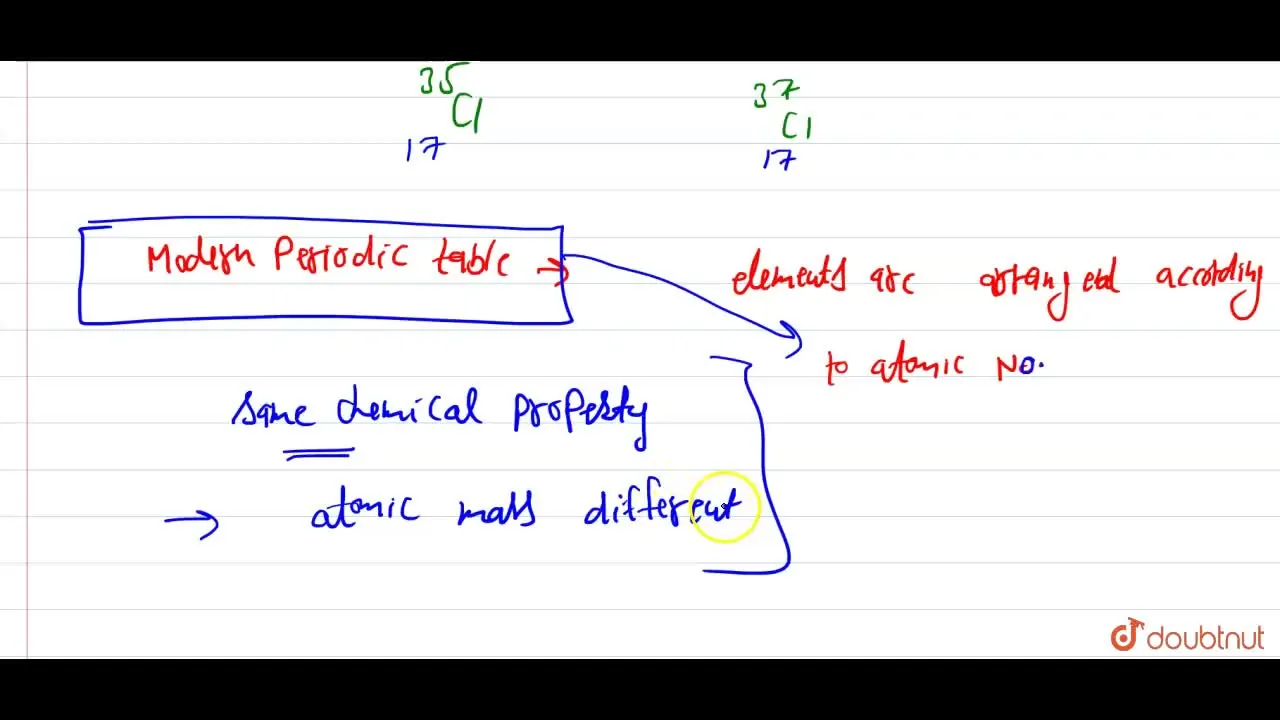(a) Why do we classify elements ?
(b) What were the two criteria used by Mendeleev in creating his Periodic Table ?
(c) Why did Mendeleev leave some gaps in his Periodic Table?
(d) In Mendeleev's Periodic Table, why was there no mention of Noble gases like Helium, Neon and Argon?
(e) Would you place the two isotopes of chlorine , Cl-35 and Cl-37 in different slots because of their different atomic masses or in the same slot because their chemical properties are the same ? Justify your answer.
(a) As different elements were being discovered, scientists gathered more information about the properties of these elements. It was observed that it was difficult to organise all the information or properties of these elements. So scientists started discovering some pattern in their properties to classify all the known elements to make their study easier.
(b) Atomic mass and similarity of chemical properties ( compounds formed by elements with oxygen and hydrogen )were the two criteria used by Mendeleev in his Periodic Table.
(c ) Mendeleev left some gaps in his Periodic Table as he predicted the existence of some elements that had not been discovered at that time.
(d) Noble gases like helium, neon, argon etc. were not mentioned in Mendeleev's Preiodic Table because these gases were discovered later as they are very inert andpresent in extremely low concentrations in our atmosphere . After the discovery of noble gases they could be placed in a new group without disturbing the existing order of the Periodic Table.
(e ) The two isotopes of chlorine Cl-35 and Cl-37 would be placed in different slots of Mendeleev's Periodic Table as both have different atomic masses. But the two isotopes have same chemical properties so would also be placed in the same slot. This is a contradiction. Thus position of isotopes of an element is not defined in Mendeleev's Periodic Table.
Related Playlists
Similar Questions
(a) Why do we classify elements?
(b) What were the two criteria used by Mendeleev to classifiy the elements in his periodic table?
(c) Why did Mendeleev leave some gaps in his periodic table?
(d) In Mendeleev's periodic table, why was there no mention of noble gases like helium neon and argon?
(e) Would you place the two isotopes of chlorine, Cl-35 and Cl-27 in different slots because of their different atomic masses or in the same slot because theri chemical properties are the same? Justify your answer.View SolutionWhat were the criteria used by Mendeléev in creating his Periodic Table?
View SolutionWhat were the criteria used by Mendeleev in creating his Periodic Table ?
View SolutionWhat were the criteria used by Mendeléev in creating his Periodic Table?
View SolutionWhat were the criteria used by Mendeléev in creating his Periodic Table?
View Solution(i) Why do we classify elements?
(ii) In Mendeleev's Periodic Table, why was there no mention of noble gases like Helium, Neon and Argon?View SolutionHistory OF Periodic Table and Mendeleev''s Periodic Table
View SolutionWhy did Mendeleev leave some vacant places in his periodic table ?
View SolutionIn Mendeleev's periodic table, why were noble gases like helium, neon and argon not mentioned?
View SolutionWhat werer the two factors on which Mendeleev based the creation of his periodic table ?
View Solution


